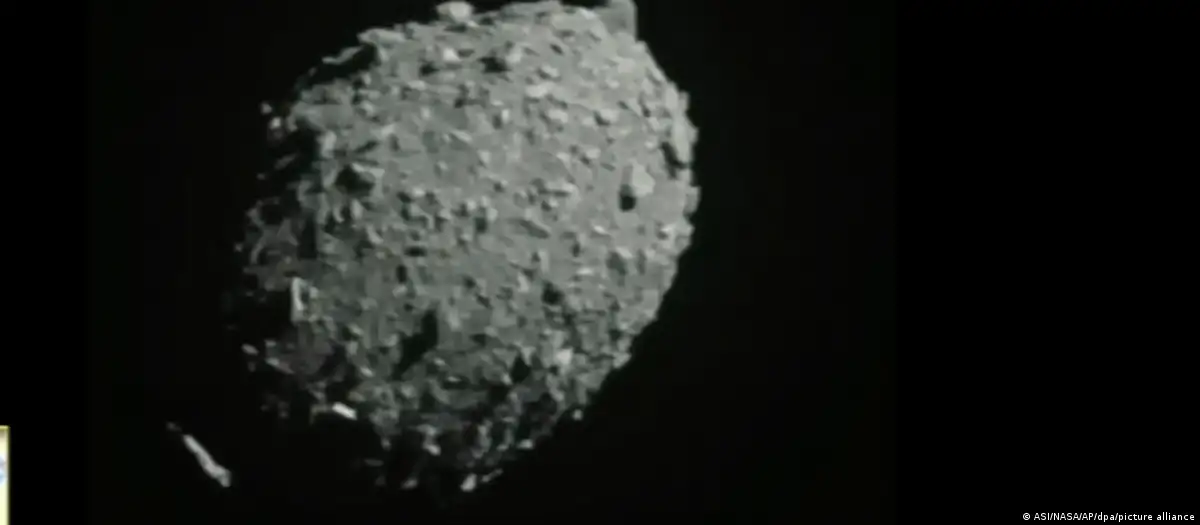NASA’s DART rocket not only altered an asteroid’s orbit by smashing into it; it has also changed its shape. Scientists say the Dimorphos asteroid previously resembled a squashed ball but is now more like a watermelon.
When NASA sent its “DART” spacecraft to slam into an asteroid in 2022, the US space agency successfully demonstrated that, if necessary, it would technically be possible to change the trajectory of a celestial object heading towards Earth and potentially avert a disastrous impact.
But not only did the intentional collision alter the course of the Dimorphos asteroid, it turns out it changed its shape too, scientists said on Tuesday.
Before the collision, NASA described Dimorphos as a “roughly symmetrical oblate spheroid.” In other words, “like a squashed ball that is wider than it is tall.”
Now, following the crash, it was said to be more like an “oblong watermelon” or, in technical terms, a “triaxial ellipsoid.”
How can an asteroid change shape?
The reason for this, according to Steve Chesley, a senior research scientist at NASA’s Jet Propulsion Laboratory (JPL) in California and co-author of the study published in The Planetary Science Journal, lies in the composition of the asteroid.
“The prevailing understanding is that Dimorphos is a loosely packed agglomeration of debris ranging from dust to gravel to boulders,” he explained. “Thus, its global strength is quite low, allowing deformation much more easily than for a solid monolithic body.”
Dimorphos is actually a moonlet which orbits a “near Earth asteroid” called Didymos around 11 million kilometers (6.8 million miles) from Earth.
Before the 22,530 kilometer-per-hour collision with the DART (Double Asteroid Redirection Test) spacecraft on September 26, 2022, Dimorphos would take 11 hours and 55 minutes to complete one loop around Didymos. That has now been reduced by 33 minutes and 15 seconds.
“By measuring the pre- and post-impact orbit of Dimorphos, we were able to deduce the change in the shape,” explained JPL navigation engineer and study lead author Shantanu Naidu, adding: “The shape change was so dramatic because of its rubble-pile composition.”
How did NASA measure the changes?
The researchers said they used three data sources in their computer models to deduce what had happened to the asteroid after impact: ground-based telescopes measuring how sunlight reflecting off the surfaces of the two asteroids changed over time, data from radio waves bouncing off the asteroids, and images obtained by DART itself while approaching Dimorphos.
“We never expected to get this kind of accuracy,” admitted Chesley.
The European Space Agency (ESA)’s Hera spacecraft, due to launch in October, is set to reach the two asteroids in late 2026 and will report back on the situation. It is not intended crash into either object.
“We are anxiously awaiting the arrival of ESA’s Hera spacecraft, when we will be able to compare our modeled shape with that obtained from Hera imagery. We will also learn how much the orbit has changed since we last observed it in 2023,” Chesley said.
Neither Didymos nor Dimorphos, whether in the shape of an egg or a watermelon, actually posed a threat to Earth.
Source: dw








